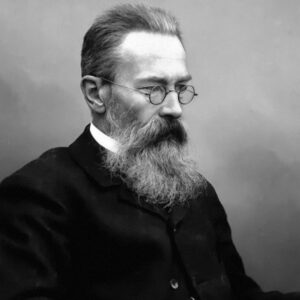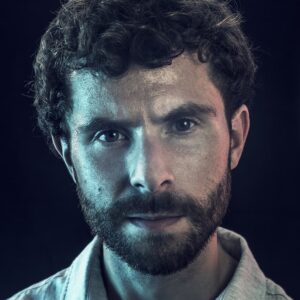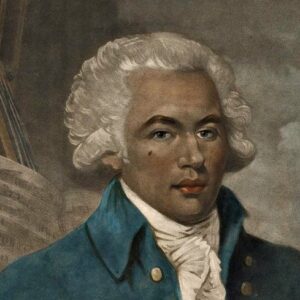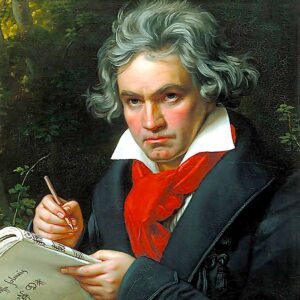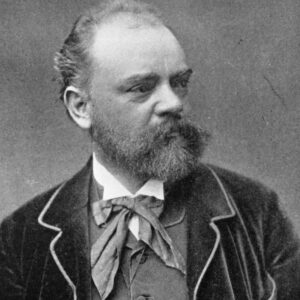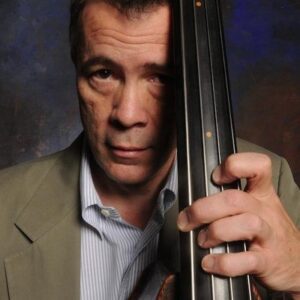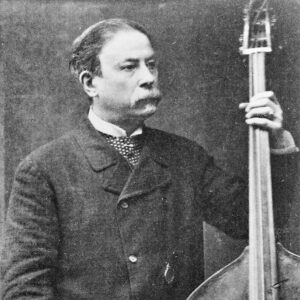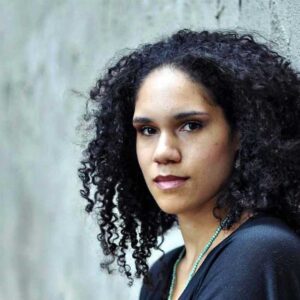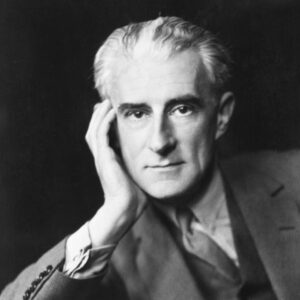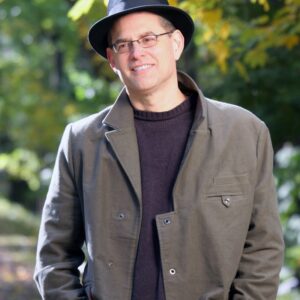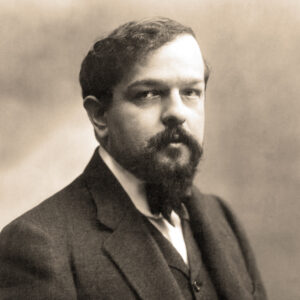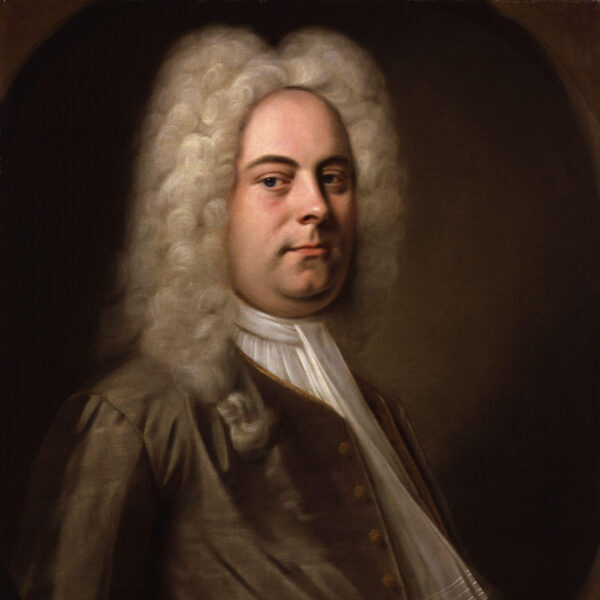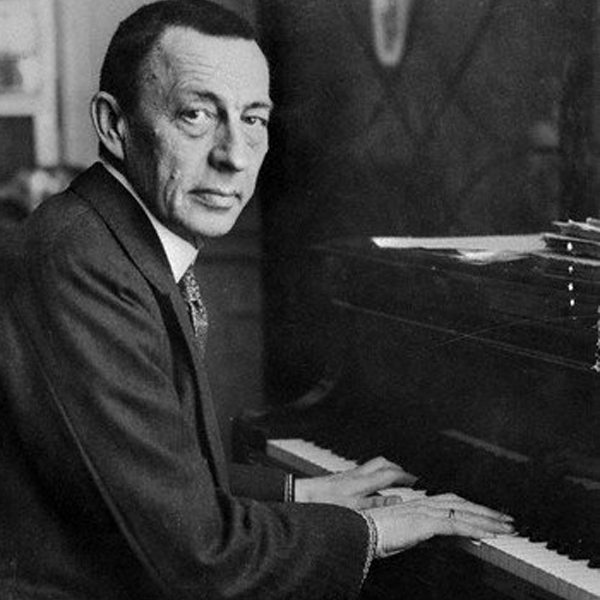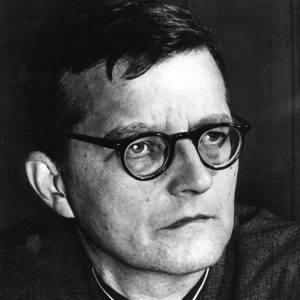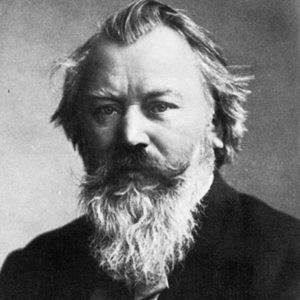Cuban Overture
George Gershwin (arr. Lee Reynolds)
George Gershwin was born in Brooklyn, NY on September 26, 1898 and died in Hollywood, CA on July 11, 1937. While his career began as a song plugger in New York City’s Tin Pan Alley, he went on to great success on Broadway in the concert hall. His most important stage work was the opera, Porgy and Bess, which remains in the repertory of opera companies and which enjoys occasional revivals on Broadway. His Cuban Overture, originally called Rumba, was composed in 1932 and received its first performance on August 16 of that year as part of the New York Philharmonic’s all-Gershwin concert under the baton of Albert Coates in New York City’s Lewisohn Stadium. The composer changed the title of the piece when it was performed again a few months later at the Metropolitan Opera. Its original scoring called for large orchestra and was modified later by F. Campbell Watson. A version created by Lee Reynolds for smaller forces was copyrighted in 2015.
Composed in 1932, Gershwin’s Cuban Overture originally was entitled Rumba, which gives an accurate description of the lively Latin dance rhythm that drives its engine. The composer might easily have named the work An American in Havana had he not used that formula earlier in the better-known work set in Paris. His visit to the capital city of Cuba had, however, served as the inspiration for this lively and appealing work.
One of the most distinctive qualities of the Cuban Overture is the use of percussion instruments associated with the rumba and other Latin dances– bongos, claves, guiro, and maracas. Pre-Castro Havana was a favorite tourism stop, famous for its party-like atmosphere, beautiful beaches, exotic food, and fine cigars. Gershwin’s Overture successfully captures the vibrant spirit of Havana in those days and quotes “Échale Salsita” composed by the Cuban bandleader Ignacio Piñeiro. Another popular song, “La Paloma” also makes its way into Gershwin’s score. Always able to walk the line between popular and art music, Gershwin created in his Cuban Overture a miniature tone poem that is at once immediately accessible and skillfully constructed. The work is cast in three broad sections, with the energetic rumbas framing a slower middle part that portrays the proud spirit of the Cuban people. Although not as well-known as An American in Paris or Rhapsody in Blue, it is a work deserving of its place in the repertory of symphony orchestras.
Program Note by David B. Levy © 1992/2021
Renaissance Concerto for Flute and Orchestra Lukas Foss
German-born American composer, pianist, and conductor, Lukas Foss [Fuchs], was born in Berlin on August 15, 1922 and died in New York City on February 1, 2009. Foss often sought to remain in touch with his historical musical heritage through all of his activities. Foss’s Renaissance Concerto for Flute and Orchestra, composed in 1985-6 at the request of virtuoso Carol Wincenc, is a prime example of some of the ways in which this imaginative composer was able to tap into repertory of the distant past. The work received its first performance by the Buffalo Philharmonic Orchestra on May 10, 1986, with Wincenc as soloist and the composer on the podium. The work is scored for solo flute, 2 flutes (doubling piccolo), oboe, clarinet, bassoon, horn, 2 trumpets, trombone, harp, harpsichord, percussion and strings.
During his highly productive life, Lucas Foss served in many capacities, including music director of the Brooklyn Philharmonic, the Milwaukee Symphony, and the Buffalo Philharmonic. He also worked as an educator, teaching at UCLA. His composition teachers included Paul Hindemith, and he studied conducting with Fritz Reiner and Serge Koussevitzky. Stylistic diversity is a hallmark of Foss’s more than 120 compositions, as he freely explored the most conservative to the most avant-garde techniques of the twentieth century. As Foss stated in an interview, “I love to try many different things. I don’t consider it changing styles; I consider it adding to my techniques. Style is personality, and the trick is that whatever technique you use, whether it [is] 12-tone or Minimalism, you have to make your own. That’s the whole point.” (New York Times, August 7, 1997)
The Renaissance Concerto for Flute and Orchestra was jointly commissioned by the Barlow Endowment for Music Composition at Brigham Young University, the Buffalo Philharmonic (Semyon Bychkov was the Music Director at the time). Additional funding came from the Cameron Baird Foundation and the Williams Gold Refining Company. Foss completed the work on March 17, 1986 and it received its premiere in Buffalo with Carol Wincenc on May 10 of that same year. Foss identified the piece “an homage to something I love, a handshake across the centuries.” The reference is to the inspiration of musical styles—primarily those of the late-Renaissance and early-Baroque period of the early 1600’s—that informs each of the Renaissance Concerto’s four movements. The Intrada (“entering piece”), for example, shifts back and forth between improvisatory-sounding cadenzas and a jig, evocative of a medieval or renaissance festival. The jig-like portions are based upon a tune from the Tudor era known as “Carman’s Whistle,” a version of which by William Byrd is found in the collection known as the Fitzwilliam Virginal Book. In the score, Foss indicates that the trumpets should be placed “in opposite corners of the hall, if possible, and/or at an elevated position (i.e., tower music),” itself an invocation of music dating back at least to the 15th century. The writing for the soloist, and occasionally the orchestra includes the “bending” of pitches, invoking the ghosts of times gone by. The second movement, called Baroque Interlude (based on Jean-Philippe Rameau) quotes the eighteenth-century master’s harpsichord piece, “L’Enharmonique.” Strange mixtures of the major and minor mode, as well as delicate and colorful timbral effects (harpsichord, glissando timpani), lend a piquant character to this short character piece. Foss entitled the third movement Recitative (after Monteverdi). The voice of the flute deputizes for that of the human voice, and the dramatic rhetorical gestures that are the essential feature of early operatic declamation are clearly apparent. Throughout the movement, Foss cribs a moment from Monteverdi’s 1607 operatic masterwork, L’Orfeo. The passage refers to Orpheus’s dramatic monologue, “Tu sei morta” (You are dead), also known as “Orpheus’s lament,” in which he resolves to descend into Hades to plead to the Gods of the Underworld for the return of his beloved Eurydice. Alessandro Striggio’s libretto for the excerpt reads “Farewell to the world, farewell to heaven, and to the sun, farewell.”
The final movement of Renaissance Concerto is labeled Jouissance (Rejoicing). This lively affair evokes several themes from the 16th and early 17th centuries, including Melville’s Musing (1612), Vincenzo Galilei’s Aria dei Sonnetti, and Carlo Gesualdo’s madrigal, Moro lasso. Toward the end of the movement Foss creates a tour-de-force duet for the soloist and percussion, a passage that tests the very limit of the solo flutist’s technical skill. After the orchestra re-enters, the piece ends in theatrical fashion as the soloist is instructed to walk offstage playing breathy key clicks, as glissandos in the strings, growing ever softer in dynamics, wave a farewell to the ghosts of the past.
Program Notes by David B. Levy, © 1997/2019/2021
Concerto for Violoncello and Orchestra in E minor, op. 85
Edward Elgar
Sir Edward Elgar was born at Broadheath, Worcestershire on June 2, 1857 and died there on February 23, 1934. He was knighted by King Edward VII in 1904. His musical style is the final and best example of British romanticism of the late Victorian era, inspired by the European (primarily German) models of Mendelssohn, Schumann, Brahms, and Wagner. Besides his frequently- performed Pomp and Circumstance March no. 1 (the trio of which has become a fixture at high school and college commencement ceremonies), his best known orchestral concert work is the Enigma Variations. His Cello Concerto dates from 1918-19. Its first performance took place in Queen’s Hall, London, on October 26, 1919 with Elgar leading the London Symphony Orchestra. The soloist was Felix Salmond. The work is scored for solo cello, 2 flutes (piccolo ad libitum), 2 oboes, 2 clarinets, 2 bassoons, 4 horns, 2 trumpets, 3 trombones, tuba (ad libitum), timpani, and strings.
The year 2007, marked the sesquicentennial of Sir Edward Elgar’s birth, witnessed by an important and appropriate reappraisal of the work of this highly gifted composer. He was born a Catholic among Anglicans and came of age at the height of Victorian British triumphalism and Edwardian splendor, only to live long enough to witness the disaster of the First World War and the waning of the romantic world with which he was so familiar. The resurgence in popularity of Elgar’s Cello Concerto owes thanks in no small part to the exuberant genius of English cellist Jacqueline du Pré (1945-1987), who performed the work frequently and recorded it at least twice. The prominent use of the piece in the film that traces du Pré’s career and relationship with her sister, Hilary and Jackie (1998), served to bring the work to the attention of an even larger audience. Given the relatively small number of successful concertos for cello, it is no surprise that Elgar’s work has become a staple of the cello repertory. Interestingly, Elgar granted authorization to Lionel Tertis to transcribe the Cello Concerto for the viola, another instrument lacking in significant repertoire.
The elegiac tone heard in much of Elgar’s Cello Concerto may be explained in part by the biographical details limned above. The work begins with a strong cadenza-like statement by the solo cello, discretely accompanied by the orchestra. The main section of the first movement is devoted to a dreamy, floating Moderato in 9/8 meter that presents two principal themes, the second of which is noble in character. The relatively subdued nature of the opening theme builds at critical moments to climaxes of tremendous power. The second movement follows without pause. The presentation of its main theme (Allegro molto) is hesitant at first, allowing the solo cello to meditate ad libitum as if it were still contemplating the opening movement’s mood. The Allegro molto itself is a whirlwind perpetual motion, punctuated by brief outbursts of romantic exuberance. The short third movement, Adagio, is a lyrical interlude that ends rather tentatively, as if to beg the finale to begin without break. An Allegro follows suit, but no sooner does it begin, when the cello shows us that the lively theme has a noble side as well in the form of a recitative and cadenza. After an exciting rush toward the instrument’s highest range, the Allegro, ma non troppo finale gets on with its business—a bumptious theme in 2/4 meter. As the movement draws towards its conclusion, the main theme from the third movement returns, slowing the tempo in a moment of profound nostalgia. One further reminiscence remains —a reference back to the opening cadenza-like statement from the first movement, replete with its memorable glissando to the low E. The Allegro molto returns, ever so briefly, to bring the concerto to its conclusion.
Notes by David B. Levy, © 2007/2021



